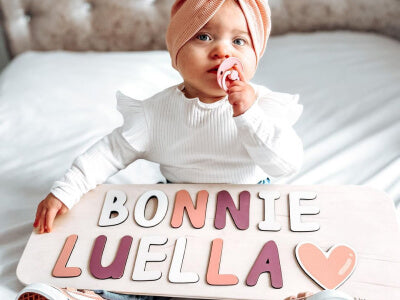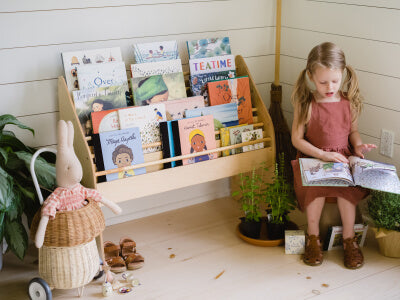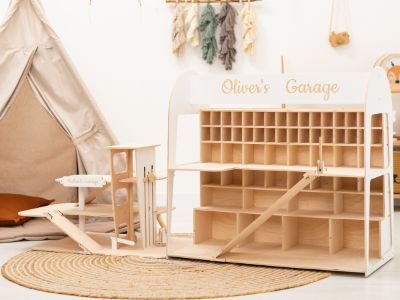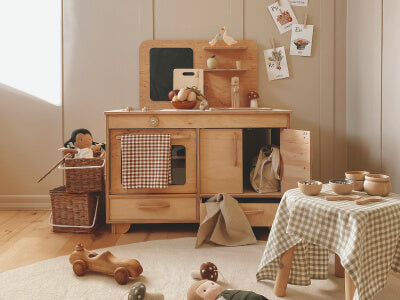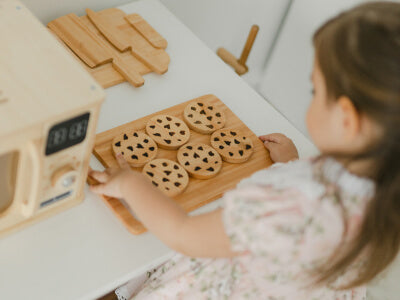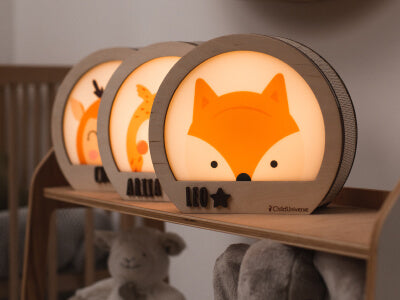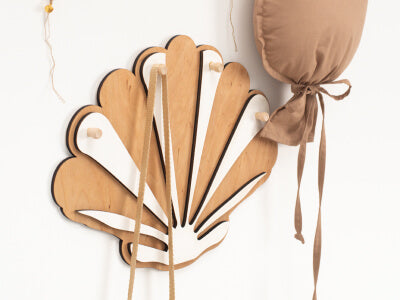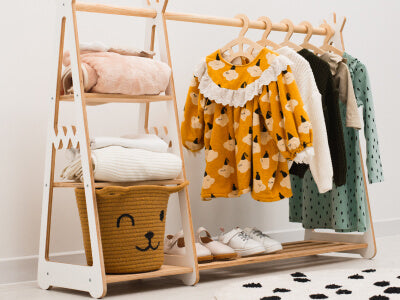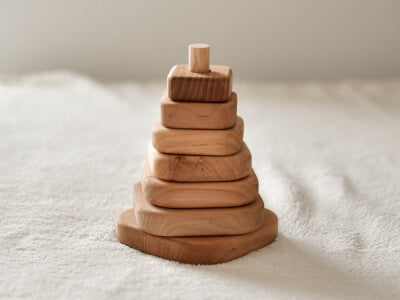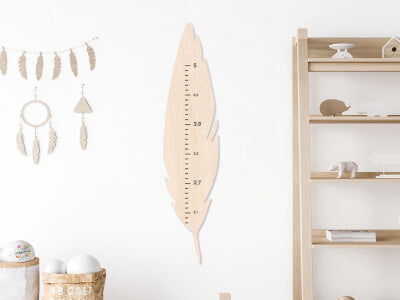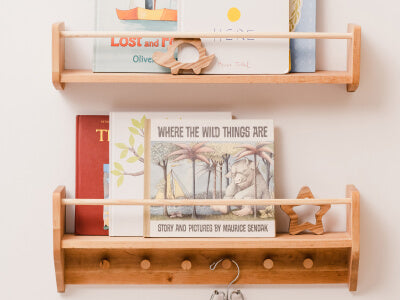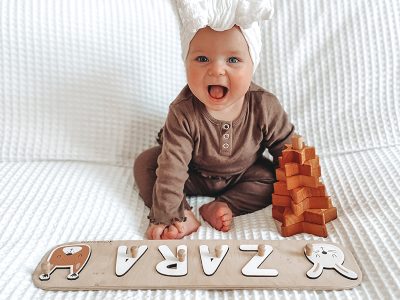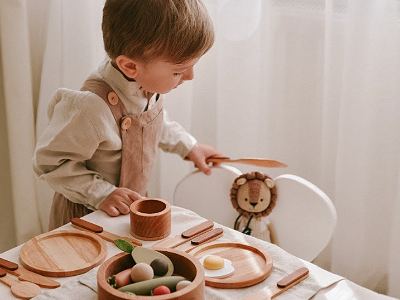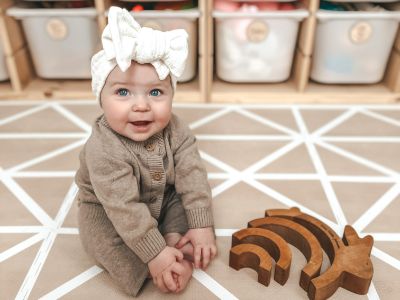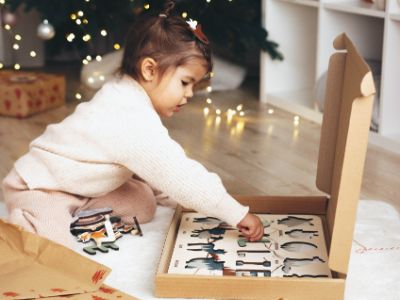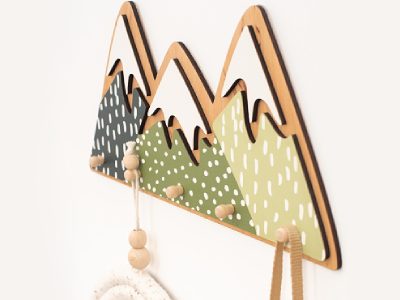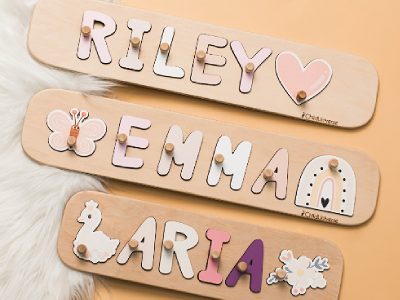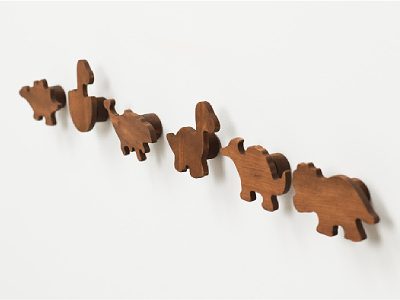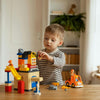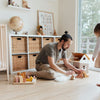When Do Babies Start Playing with Toys
- •

Photo by Yan Krukau from Pexels
- Newborns to 3 Months: Touching, Reaching, Exploring
- Around 6 Months: Curiosity Mode ON!
- 9 to 12 Months: Mobility, First Steps and Imitation
- 12+ Months: Let the Complex Play Begin!
- Don’t Forget That…
They grow up incredibly fast…Sooner than you know, you feel bittersweet watching them crawling, talking, and needing you less than before. The reality is that every single day comes with a new change and new discovery that you can’t keep up with. And there comes that day when this happens…
Toys enter the arena!
When do babies start playing with toys? Sooner than you think! We have some of the bestsellers from this category in our assortment; however, before you dive into the inevitable shopping, let’s see when exactly littlies start getting occupied with playthings and what you can do to provide them with age-appropriate and suitable items.
Newborns to 3 Months: Touching, Reaching, Exploring
Based on the“How Do Today's Children Play and with Which Toys?” research, the first toys build a new world in a baby and shape the child’s overall development. When do babies become interested in toys? Definitely not during the initial weeks post-birth. It’s the time of passive interaction with toys. Baby’s vision isn’t well-developed yet, so the “play” is about introducing them to various sensory experiences. At this time, your bébé doesn’t play with toys as older kids do, but they are responsive to colorful and soft items with textures and sounds. The sweet reps of this age group give preference to soft stuffed animals, rattles and mobiles with high contrast that help them learn to track objects, focus their eyes, etc.
Around 6 Months: Curiosity Mode
A lot of members of the Child-Universe community are parents themselves and have an idea of the changes you can expect at this time and questions you’re most likely to ponder over. When do babies like toys? When should you introduce toys to baby? According to the “A Guide to Development: From Birth to 18 Months” report, at around 6 months, babes learn to grasp feet with hands, roll to back and to front, and be more mobile on their tummies. They’re excited to take stuff to their mouth to explore them using all senses. They sit themselves now, which means their hands are free to grip and manipulate objects. Buy items that will respond to children’s actions by lighting up or/and making noise. Activity centers, stacking rings, and soft blocks are particularly fascinating at this age, encouraging little ones to explore the relationship between cause and effect.
9 to 12 Months: Mobility, First Steps and Imitation
If you ask yourself, “When do babies start interacting with toys?” wait until they’re 9 months old. It’s exactly at this period that they sit alone, reach for, and play with objects. They can easily roll and (try to) crawl. Kids use both hands to hold two toys and pass them from one hand to the other. At the same time, imitation kicks in! Rug rats see you engaged in different activities at home and try to imitate what they see. Toy phones, primitive musical instruments, and make-believe accessories, such as dolls or kitchen utensils, should be an integral part of their routine. They stretch up arms to be picked up, and you just go aww.
12+ Months: Let the Complex Play Begin!
Don’t Forget That…

…it is easy to get overwhelmed by the abundance of products available on the market today. From cute rattles for infants to name puzzles for toddlers, the assortment has it all. At our ChildUniverse blog, we’ve already talked about the importance of all those items. Now that you know the answer to the “When can babies start playing with toys?” question, we offer these simple rules to help you provide your baby with the best:
- Age matters. Check out the packaging to find out what the recommended age of this or that toy is. Thus, you will know whether the product is appropriate for the developmental stage of your munchkin.
- Keep safety in mind! Every toy must be crafted from 100% non-toxic materials, containing no small elements that kiddies can swallow of choke.
- Pick washable/easy to clean items. Your tot will definitely put the toy in the mouth so purchase something that is easy to wash.
- All senses should be activated. Items with different visuals, textures, and sounds will be a hit.
What age do babies start playing with toys? From the very first months soon after birth, pumpkins respond to crinkly books, rattles, and texture toys, stimulating both touch and hearing. However, it is important to keep in mind that some bébés show interest in playthings earlier than others. Worry not! Your task here is to observe all the cues of your precious and provide toys that match their current interests and stage of development. Happy parenting!

